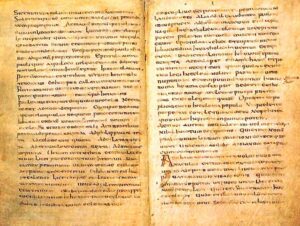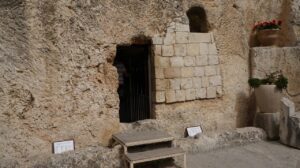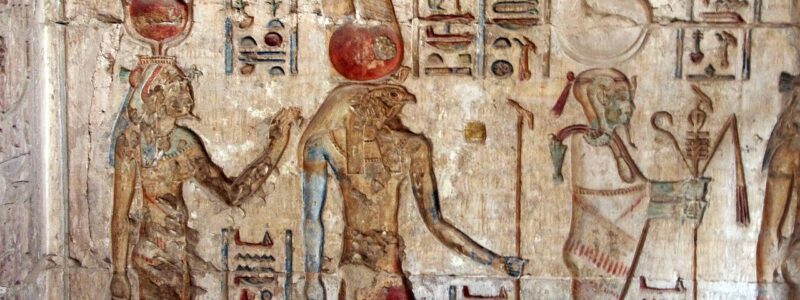Historicity of the Resurrection
The historicity of the resurrection has been debated for many years. The “minimal facts argument was developed by Gary Habermas for his Ph.D. dissertation to evaluate the possibility that the resurrection was an actual historical event and not just a nice story invented by an ancient culture.
While secular scholars might disagree as to whether Christ rose from the dead in bodily form and revealed himself to multitudes of people, they do agree on several facts concerning the event. These critical scholars can be liberal Christians, agnostic, or even atheist in their religious views as long as they are specialists in a relevant field of religious study (such as New Testament theology).
The reason for this agreement among skeptics is that the evidence is irrefutable and undeniable. Most of these minimal facts are confirmed by multiple historical considerations that testify to their accuracy. This confirmation is remarkable for a historical event that occurred two thousand years ago.
The Six Minimal Facts

Image by Gerd Altmann from Pixabay
There are six minimal facts that are agreed upon by expert religious historians regardless of whether they are atheists or religious in worldview. These minimal facts are:
- Jesus died by crucifixion and the empty tomb,
- Very soon after the crucifixion, his followers had real experiences that they thought represented appearances of a risen Jesus,
- His followers were so transformed from this experience that they went from cowering in a room afraid of arrest to be willing to die for their faith in the resurrection message,
- The actuality of the resurrection was taught very early soon after the crucifixion,
- James, Jesus’ unbelieving brother, became a Christian due to his own experiences which he believed was a resurrected Christ,
- The Christian persecutor – Paul – became a believer after a similar religious experience.
These skeptical scholars are willing to cite New Testament texts to provide evidence as to the historicity of the event, as well as contemporary extra-Biblical sources. It should be noted that the minimal facts approach does not necessarily assume the inerrancy of Scripture or divine revelation but only holds these writings to be historical documents from the first century.
Evaluating the Truth of Historical Events
The truth of historical events can be difficult to ascertain for certainty. Many times, there is very little historical information regarding a particular event in which case it becomes somewhat suspect.
The ascertainment of the credibility of historical events is challenging since no one can personally experience the actual event in question. In most of science, we can observe, measure, and define a particular event through direct observation – not so with history.
Criteria have been developed which try to evaluate whether a given event is historical or mythological – or a combination of the two.

Bible – Image by Free-Photos from Pixabay
The truth of historical events is confirmed when one or more of the following criteria is met.
- Historical claims are strong when supported by multiple independent sources. There are sources outside the Bible that substantiate much of the Biblical narrative. These sources are from historical figures which were antagonistic to the emerging Christian religion, and some of these confirmatory sources were active in the persecution of Christians.
- Historical claims which include embarrassing details and admissions which reflect badly upon heroes of the story suggest truthfulness. Made up stories generally do not include embarrassing details concerning the main figures in the story. One very familiar illustration of an embarrassing detail concerns Peter. When Christ was taken to be tried, Peter watched from the outside curious to see what would happen. He was recognized as a disciple of Christ by others in the crowd likely placing him in some danger. Realizing his predicament, Peter swore up and down he never knew Christ.
- Historical claims that are supported by eyewitnesses are more likely true. We have letters and writings from some of the strongest opponents from Christianity’s early days. Not one of these missives suggests Christ was a hoax, that he never existed, or that he was a made-up character. The gospels were written only a few decades after the actual events occurred while there were still plenty of eye-witnesses alive who could corroborate the details.
The facts surrounding the resurrection are historical and can be evaluated as such. The “meaning” of the resurrection is a theological matter while the “historicity” of the resurrection can be examined just like any other proposed historical event. The historicity of the six “minimal facts” is more strongly supported that most other events in ancient history.
The Resurrection

Image by tazzanderson from Pixabay
What the Resurrection is Not
Sometimes to discuss what something is, it is best to start by describing what it is not.
It is not a resuscitation. When Christ is said to be “raised” from the dead, it is crucial to note that Christ was dead – not merely unconscious or comatose. The revival of somebody who was injured would more accurately be described as a resuscitation – not a resurrection.
Scripture describes multiple people before Christ who were brought back to life after death. For example, there is the prophet Elijah raising the widow’s son from the dead (1 Kings 17:17-24), or Christ bringing Jairus’ twelve-year-old daughter back to life (Matthew 9:18-26). But perhaps the most spectacular was when Christ brought his friend Lazarus back to life after four days in the tomb.
Unfortunately, each of these people who were brought back to life would have to die again.
It is not purely spiritual. Scripture portrays the resurrection as a bodily event; it is not claiming that Jesus’ soul or spirit was “alive” with God. Many first-century Jews believed that death was the separation of the soul from the body which would then live on. For example, Christ talks about how Abraham, Isaac, and Jacob are still “living” even though the remains of their body were on earth.
The disciples did not proclaim “The spirit of Jesus is with God” or “Jesus is alive in God.” Instead, they proclaimed the “resurrection” of Christ’s “body.” This means that something fundamentally different from what happened to the ancient patriarchs.
It is not “exaltation.” The resurrection occurred first, and then Christ was taken into heaven. The resurrection of Christ and his ascension into heaven are two separate, individual events.
The resurrection has to do with what happened to Jesus’ dead body as it was in the tomb while the ascension has to do with what happened to Christ’s living body after it exited the tomb.
What the Resurrection Is
Three points are considered important concerning the resurrection.

By Unknown author – http://www.neverthirsty.org/pp/bible-questions/answer01099-what-is-the-muratorian-fragment.html, Public Domain, Link
The resurrected Christ had an actual solid body – he is not a ghost. Luke notes,
As they were saying this, Jesus himself stood among them, and said to them, “Peace to you.” But they were startled and frightened and supposed that they saw a spirit. And he said to them, “Why are you troubled, and why do questioning rise in your hearts? Se my hands and my feet, that it is I; handle me, and see; for a spirit has not flesh and bones as you see that I have.” And when he had said this he showed them his hands and his feet. And while they still disbelieved for joy, and wondered, he said to them, “Have you anything here to eat?” They gave him a piece of broiled fish, and he took it and ate before them.
There is nothing more bodily than eating.
The same body. Christ returned to life in the same body as he had before his death.
Christ is recognized immediately by his disciples even though they were slow to understand how this could be the Jesus they had just seen tortured on a Roman cross. He does retain some of the crucifixion wounds so he might be connected with the crucifixion, The Gospel of John makes Jesus’ appearance explicit,
Now Thomas, one of the twelve, called the Twin, was not with them when Jesus came. So the other disciples told him, “We have seen the Lord.” But he said to them, “Unless I see in his hands the print of the nails, and place my finger in the mark of the nails, and place my hand in his side, I will not believe.”: Eight days later, his disciples were again the house, and Thomas was with them. The doors were shut, but Jesus came and stood among them, and said, “Peace be with you.” Then he said to Thomas, “Put your finger here, and see my hands; and put out your hand and place it in my side; do not be faithless, but believing.” Thomas answered him, “My Lord and my God!” Jesus said to him, “Have you believed because you have seen me? Blessed are those who have not seen and yet believe.
A transformed body. The resurrected Jesus had a transformed body. Although it still bore resemblance to his premorbid body, it now had extraordinary qualities. For example, in his resurrected body, Christ can walk through walls, veil his presence, and appear when and how he wants.
Christ appeared to several sojourners while they were on their way to the town of Emmaus,
That very day two of them were going to a village named Emmaus about seven miles from Jerusalem and talking with each other about all these things that had happened. While they were talking and discussing together, Jesus himself drew near and went with them. But their eyes were kept from recognizing him.
It is not like the disciples failed to recognize Jesus; rather, they were kept from recognizing him. Also, on Easter Sunday, the risen Christ passes through “shut” doors as his body has been radically “changed.” (1 Corinthians 15:42-51).
When the Scriptures say Christ was “raised from the dead,” they do not mean he was restored to earthly life. Also, they did not mean his soul was exalted in some fashion and went to heaven after he died. They mean that Jesus had been restored to bodily life with a new, glorified body that would never again die.
Why Would Any Jew Believe in This?
 It is well attested historical fact that many thousands of Jews at the time of Christ believed in his resurrection – and also a well-attested fact that many non-Jews did as well. Belief in Christ’s bodily resurrection swept through the Roman world like wildfire.
It is well attested historical fact that many thousands of Jews at the time of Christ believed in his resurrection – and also a well-attested fact that many non-Jews did as well. Belief in Christ’s bodily resurrection swept through the Roman world like wildfire.
The New Testament relates that many people of the time naturally did not believe such a thing was possible. Most people met this belief in Christ’s resurrection was largely met with disbelief, ridicule, and suspicion.
Paul was traveling through Athens and had this experience,
Paul, standing in the middle of the Areopagus, said: “Men of Athens … [God] has fixed a day on which he will judge the world in righteousness by a man whom he has appointed, and of this, he has given assurance to all men by raising Him from the dead.” Now when they heard of the resurrection of the dead, some mocked. (Acts 17:22, 31-32.)
People in the ancient world knew the common experience that when people die – they stay dead. Scriptures illustrate three reasons why even though most ancient people would not believe a resurrection was a possibility – some believed,
The Empty Tomb
One of the best-attested facts of ancient history is the empty tomb. Even authors such as the atheist Bart Ehrman believe in the empty tomb writing,
All of our sources agree that Jesus was dead and buried and that on the third day his tomb was empty.
All four of the gospels portray the tomb as empty on Easter morning. The Gospel of John puts it this way,
Now on the first day of the week, Mary Magdalene came to the tomb early, while it was still dark, and saw the stone had been taken away from the tomb. So she ran and went to Simon Peter and the other disciple, the one whom Jesus loved, and said to them, “They have taken the Lord out of the tomb, and we do not know where they have laid him.” Peter then came out with the other disciple, and they went toward the tomb. They both ran, but the other disciple outran Peter and reached the tomb first, and stooping to look in, he saw the linen cloths lying there, but he did not go in. Then, Simon Peter came, following him, and went into the tomb; he saw the linen cloths lying, and the napkin, which had been on his head, not lying with the linen cloths but rolled up in a place by itself. Then the other disciple, who reached the tomb first, also went in, and he saw and believed; for as yet they did not know the scripture, that he must rise from the dead. Then the disciples went back to their houses. (John 20:2-10).
This is certainly a remarkable story – but why believe it is possible, let alone probable, this occurred?
A made-up story penned by ancient Jews would almost certainly not have made women the original witness of the empty tomb. Women were second-class citizens in ancient civilizations. The testimony of first-century women was widely regarded as unreliable. This is reflected in the gospels themselves which report that some of the male disciples simply did not believe the women’s story! Luke records the disciples regarded the women’s version as an “idle tale” or “nonsense.”

Example of the Garden Tomb
Whence the Body
The gospels note that somehow the disciples missed one of the central messages of Christ’s teaching to them – that he would be killed and then be “raised” afterward. They likely all believed Christ was the Messiah which mean he would be responsible for the liberation of Jews from Roman domination. None of them wanted to believe the Messiah would be the Suffering Servant portrayed in Isaiah 53.
Mary Magdalene’s first impression was that the body had been taken somewhere. This would be a natural presumption – certainly much more likely than a dead body miraculously coming back to life and simply walking out of the tomb.
This was also the explanation of the Jewish elders. They were the ones responsible for the posting of guards outside the tomb to prevent just such an occurrence. The elders started to spread the rumor that Jesus’ disciples “came by night and stole him away.” while the soldiers were sleeping. (Matthew 28:12-13).
The Jewish elders and the Romans do not argue that the tomb was not empty and the body was still there. They likely inspected the tomb as well and came to the same obvious conclusion that Christ’s body was missing. The elders fail to explain how a group of fishermen came to the tomb at night, tore a Roman seal and rolled away a huge stone covering the opening of the tomb, all while Roman soldiers were guarding the entrance. The Roman penalty for falling asleep while on guard duty was death (Acts 12:18-19).
The Appearances
Scripture reports more than just Christ’s body disappeared into the night somehow. Instead, it relates multiple appearances to hundreds of people.
Many of these appearances are firsthand witnesses; this is not like somebody told somebody and so on until finally, somebody wrote the whole thing down.
Matthew records in his gospel how Jesus appeared to the eleven disciples (which would, of course, include Matthew). Similarly, John records the appearance of Christ to John the Beloved along with several other apostles, while fishing in the Sea of Galilee (John 21:1-14).
Luke also describes his writing as being based on “eyewitnesses from the beginning” and not some mythical story.
What About the Discrepancies

Image by Free-Photos from Pixabay
Some scholars argue that the resurrection story could not be historical in that there are so many discrepancies among the witnesses. It is difficult, if not impossible, to reconcile all these differences into a coherent story.
How many angels are present – one or two? How many women are present at the initial discovery of the empty tomb – one, two, three?
But do these discrepancies argue against the truthfulness of the story, or in actuality substantiate the story? It would seem likely if the story were made up that the writers would be more meticulous in reporting their story.
The presence of differences in details among the various authors of the gospels does not mean the resurrected Jesus did not appear to the disciples. That would be like claiming the discrepancies between eyewitnesses of the sinking of the Titanic meant the ship did not sink.
There are no discrepancies in the main story reported by the gospel and in extra-Biblical evidence we have. This evidence agrees that on the third day after his death (and many other times as well), Christ appeared to multiple disciples in bodily form.
Fulfillment of Ancient Jewish Scripture

Ezekiel’s Tomb – By Farhadmirza – Own work, CC BY-SA 4.0, Link
Ancient Jewish Scripture from what Christians refer to as the “Old Testament” clearly predicts the coming of a Messiah to Israel in remarkable detail. These predictions are not just about some vague person in the future who would at some future day come to rescue the country. Rather, the ancient Scripture predicts the date, the appearance, facts about his ministry and even mode of execution.
Original copies of these ancient scriptures have museums which have been carbon-14 dated to centuries before Christ came.
The gospels make clear reference to these ancient Scriptures.
Then he opened their minds to understand the scriptures, and said to them, “Thus it is written, that the Christ should suffer and on the third day rise from the dead. (Luke 14:45).
Then the other disciple, who reached the tomb first, also went in, and he saw and believed; for as yet they did not know the scripture, that he must rise from the dead. (John 20:8-9)
For I delivered to you as of first importance what I also received, that Christ died for our sins in accordance with the scriptures, that he was buried, that he was raised on the third day in accordance with the scriptures. (1 Corinthians 15:3-4).
When asked by religious leaders to give them a sign to show he was the Messiah, Christ referred to one major sign in the Old Testament – the sign of Jonah. Likely, these religious leaders did not comprehend the relevance of this ancient to Christ and why of all ancient Scriptures he would pick this particular event.
This will be the topic of another article.
Summary
The six minimal facts are agreed upon by most atheist scholars. These minimal facts are,
- Jesus died by crucifixion and the empty tomb,
- Very soon after the crucifixion, his followers had real experiences that they thought represented appearances of a risen Jesus,
- His followers were so transformed from this experience that they went from cowering in a room afraid of arrest to be willing to die for their faith in the resurrection message,
- The actuality of the resurrection was taught very early soon after the crucifixion,
- James, Jesus’ unbelieving brother, became a Christian due to his own experiences which he believed was a resurrected Christ and would die a martyr to his new belief,
- The Christian persecutor – Paul – became a believer after a similar religious experience.
These facts when taken together in totality suggest something big happened then, something so big as to transform society and eventually the world.
Prior to Christ’s execution, he was reviled by the Jerusalem people that they urged the Roman rulers to kill him, and freed the murderer Barabas rather than give Christ his freedom. His followers were cowering behind locked doors certain they were going to be next on the cross for being associated with this criminal.
Something happened to so turn around this situation that thousands would voluntarily be tortured and executed along with their children rather than retract their belief in the risen Christ.
Could it be that the resurrection really happened – that it is a real historical event? The available evidence would suggest this is a real possibility.




